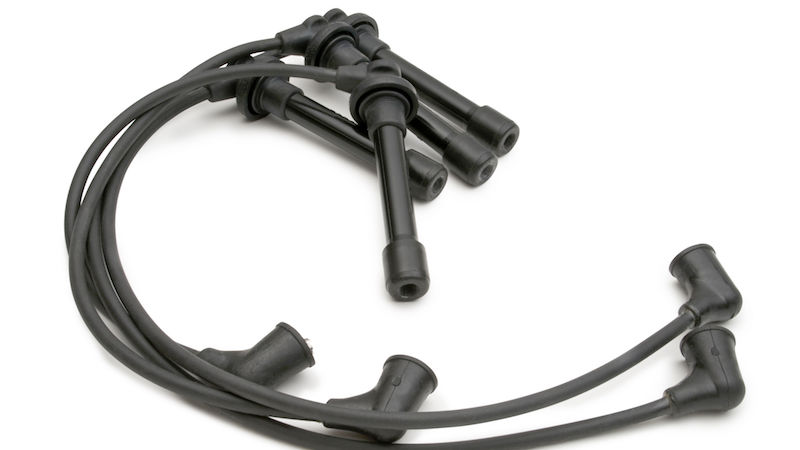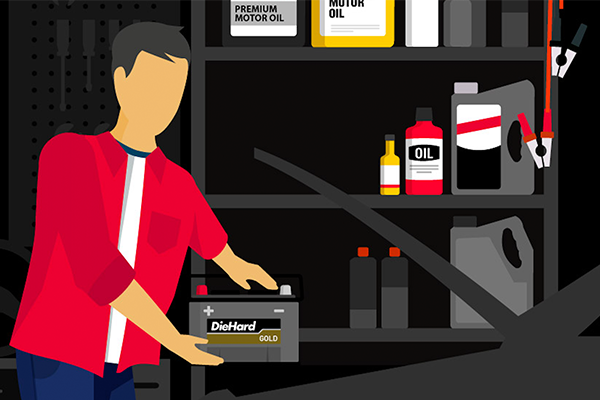
Follow these steps to remove worn spark plug wires, replace them with new ones and improve performance.
Spark plug wires don’t last forever. High underhood temperatures cause the wires’ insulation to wear out, allowing sparks to take the path of least resistance and arc to the closest metal object. Worn spark plugs can cause hard starts, rough idling, hesitation and poor gas mileage. If you're curious, learn even more about why it's important to change spark plug wires.
You should change your spark plugs every 30,000 miles or if you notice indications that the wires need to be replaced earlier, such as cracks or nicks in your spark plugs' wire insulation and/or oil-soaked areas. You can also check under the hood at night with your engine running for sparks visible along the wires’ length. Any arcing sparks would indicate a defective wire in need of replacement. If in doubt, spray the plug wires with a water spray bottle while the engine is running at night — any arcs will show themselves then.
Swapping out the old wires with new ones takes some attention to detail, but it's a fairly straightforward job with big payoff.
This is a good project for new DIYers
-
Look under the hood to confirm that your vehicle uses spark plug wires. Many newer vehicles use ignition coils instead of the distributor and spark plug wire system.
-
Once you’ve confirmed that the vehicle does indeed have spark plug wires, know that they are designed for an exact fit, based on vehicle make, model and year. Make sure you ask for and receive the new spark plug wire kit designed specifically for your vehicle.
-
Lay the new wires out on a flat surface so they’re fully extended.
-
The old wires, as well as the new ones, may each be numbered (look near the wire ends) making your job easier. Correspond the new wire with the old, like-numbered wire, remembering to replace only one wire at a time. Don’t worry if the wires aren’t numbered. You’ll learn how to get around this in Step 6.
-
Identify which spark plug wire you’ll remove first. Then use the spark plug boot removal tool to remove one end of the old wire from the distributor. Use the tool again to disconnect the other end from the spark plug. The spark plug wire’s “boot” is located at the rubber housing at each end of the wire. The boot removal tool makes the job easier and prevents damaging the plug itself.
-
Compare the old wires to the new wires to find the one with the exact same length and/or match the wires’ numbers if available.
-
Using your fingertip, place some dielectric grease into the boots on each end of the new wire.
-
Reinstall the boot by pushing it into place on the spark plug and then onto the distributor. As you do, you should feel a noticeable “click” that indicates it’s installed securely.
-
Double check that the new wire is installed in the same pattern as the old wire, and that it isn’t in contact with any part of the hot exhaust system or with moving parts, such as a fan belt.
-
Repeat until all the wires have been replaced.
-
There will be one wire that's only about 6 or 8 inches long — this goes from the ignition coil to the distributor. You'll want to replace this last. The coil is the cylindrical object near the distributor cap, and the coil wire goes to a terminal at the center of the cap.
Before you get started, take some photos so you can see exactly how each wire is routed, and replace one wire at a time.
On older vehicles with a distributor and plug wires, the distributor cap may also need replacement. Pull the cap off and get a look on the inside for oxidation and carbon buildup (aka "carbon tracks"), as well as carbon on the contact of the rotor. If the cap and rotor are worn, replace them as well, being very careful to replace plug wires in their exact same order.







